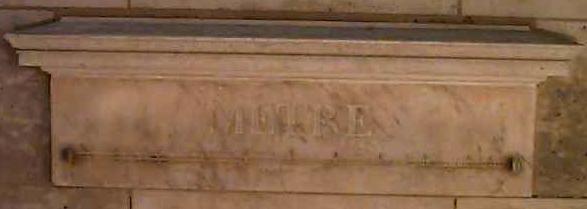
Move the frame border if necessary To see the entire image.

One of the standard metres found in the streets of Paris. This one can still be found at No. 36, Rue de Vaugirard.
The metre - named after the Greek word metron (metron) for measure - was initially defined as one ten millionth of the distance along the Earth's meridian from pole to equator. The meridian chosen for this definition in 1795 was that passing through Paris and Barcelona. The subsequent physical embodiment of this metre, known as the international prototype metre, was the distance between two lines engraved on a platinum bar held at the International Bureau of Weights and Measures in Paris.
Acceptance of the new unit was closely linked with progress in political unification. Germany adopted the metre in 1870 during the founding of the German Reich.
In 1875 eighteen countries signed the Metre Convention. All signatories agreed to ensure the international unification and perfection of the metric system. For this purpose, they established
In 1960 the metric system was expanded by international agreement into the "Système International d'Unités" (SI; International System of Units). It now includes units for electrical and other quantities and consists of a total of seven base units from which all other units can be derived through multiplication or division, without conversion factors.